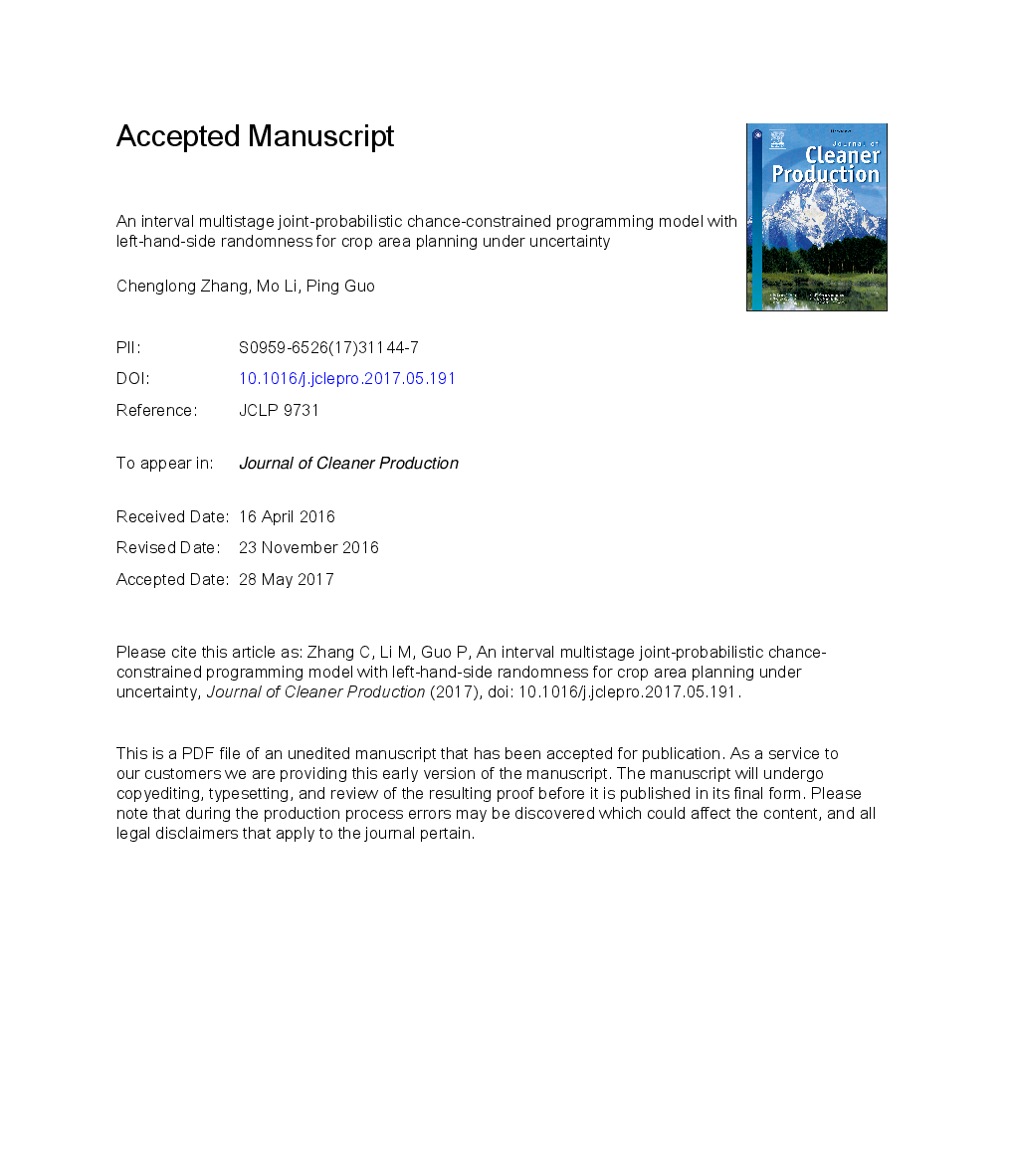ترجمه فارسی عنوان مقاله
یک مدل برنامه ریزی محدودیت شانس احتمالی مشترک چندگانه با تصادفی سمت چپ برای برنامه ریزی محصول تحت عدم قطعیت
عنوان انگلیسی
An interval multistage joint-probabilistic chance-constrained programming model with left-hand-side randomness for crop area planning under uncertainty
| کد مقاله | سال انتشار | تعداد صفحات مقاله انگلیسی |
|---|---|---|
| 95469 | 2017 | 56 صفحه PDF |
منبع

Publisher : Elsevier - Science Direct (الزویر - ساینس دایرکت)
Journal : Journal of Cleaner Production, Volume 167, 20 November 2017, Pages 1276-1289
ترجمه کلمات کلیدی
برنامه ریزی منطقه محصول، آبیاری کشاورزی، برنامه ریزی تصادفی چند مرحله ای، برنامه ریزی محدودیت شانس سمت چپ، برنامه ریزی احتمالاتی مشترک، عدم قطعیت،
کلمات کلیدی انگلیسی
Crop area planning; Agricultural irrigation; Multistage stochastic programming; Left-hand-side chance-constrained programming; Joint probabilistic programming; Uncertainty;

